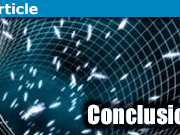Struggles with the Continuum – Relativity and Quantum
In this series, we’re looking at mathematical problems that arise in physics due to treating spacetime as a continuum—basically, problems with infinities.
In Part 1 we looked at classical point particles interacting gravitationally. We saw they could convert an infinite amount of potential energy into kinetic energy in a finite time! Then we switched to electromagnetism and went a bit beyond traditional Newtonian mechanics: in Part 2 we threw quantum mechanics into the mix, and in Part 3 we threw in special relativity. Briefly, quantum mechanics made things better, but special relativity made things worse.
Now let’s throw in both!
When we study charged particles interacting electromagnetically in a way that takes both quantum mechanics and special relativity into account, we are led to quantum field theory. The ensuing problems are vastly more complicated than in any of the physical theories we have discussed so far. They are also more consequential since at present quantum field theory is our best description of all known forces except gravity. As a result, many of the best minds in 20th-century mathematics and physics have joined the fray, and it is impossible here to give more than a quick summary of the situation. This is especially true because the final outcome of the struggle is not yet known.
It is ironic that quantum field theory originally emerged as a solution to a problem involving the continuum nature of spacetime, now called the ‘ultraviolet catastrophe’. In classical electromagnetism, a box with mirrored walls containing only radiation acts as a collection of harmonic oscillators, one for each vibrational mode of the electromagnetic field. If we assume waves can have arbitrarily small wavelengths, there are infinitely many of these oscillators. In classical thermodynamics, a collection of harmonic oscillators in thermal equilibrium will share the available energy equally: this result is called the ‘equipartition theorem’.
Taken together, these principles lead to a dilemma worthy of Zeno. The energy in the box must be divided into an infinite number of equal parts. If the energy in each part is nonzero, the total energy in the box must be infinite. If it is zero, there can be no energy in the box.
For the logician, there is an easy way out: perhaps a box of electromagnetic radiation can only be in thermal equilibrium if it contains no energy at all! But this solution cannot satisfy the physicist, since it does not match what is actually observed. In reality, any nonnegative amount of energy is allowed in thermal equilibrium.
The way out of this dilemma was to change our concept of the harmonic oscillator. Planck did this in 1900, almost without noticing it. Classically, a harmonic oscillator can have any nonnegative amount of energy. Planck instead treated the energy
. . . not as a continuous, infinitely divisible quantity, but as a discrete quantity composed of an integral number of finite equal parts.
In modern notation, the allowed energies of a quantum harmonic oscillator are integer multiples of ##\hbar \omega##, where ##\omega## is the oscillator’s frequency and ##\hbar## is a new constant of nature, named after Planck. When energy can only take such discrete values, the equipartition theorem no longer applies. Instead, the principles of thermodynamics imply that there is a well-defined thermal equilibrium in which vibrational modes with shorter and shorter wavelengths, and thus higher and higher energies, hold less and less of the available energy. The results agree with experiments when the constant ##\hbar## is given the right value.
The full import of what Planck had done became clear only later, starting with Einstein’s 1905 paper on the photoelectric effect, for which he won the Nobel prize. Einstein proposed that the discrete energy steps actually arise because the light comes in particles, now called ‘photons’, with a photon of frequency ##\omega## carrying energy ##\hbar\omega##. It was even later that Ehrenfest emphasized the role of the equipartition theorem in the original dilemma, and called this dilemma the ‘ultraviolet catastrophe’. As usual, the actual history is more complicated than the textbook summaries. For details, try:
• Helen Kragh, Quantum Generations: A History of Physics in the Twentieth Century, Princeton U. Press, Princeton, 1999.
The theory of the ‘free’ quantum electromagnetic field—that is, photons not interacting with charged particles—is now well-understood. It is a bit tricky to deal with an infinite collection of quantum harmonic oscillators, but since each evolves independently from all the rest, the issues are manageable. Many advances in the analysis were required to tackle these issues in a rigorous way, but they were erected on a sturdy scaffolding of algebra. The reason is that the quantum harmonic oscillator is exactly solvable in terms of well-understood functions, and so is the free quantum electromagnetic field. By the 1930s, physicists knew precise formulas for the answers to more or less any problem involving the free quantum electromagnetic field. The challenge to mathematicians was then to find a coherent mathematical framework that takes us to these answers starting from clear assumptions. This challenge was taken up and completely met by the mid-1960s.
However, for physicists, the free quantum electromagnetic field is just the starting point, since this field obeys a quantum version of Maxwell’s equations where the charge density and current density vanish. Far more interesting is ‘quantum electrodynamics’, or QED, where we also include fields describing charged particles—for example, electrons and their antiparticles, positrons—and try to impose a quantum version of the full-fledged Maxwell equations. Nobody has found a fully rigorous formulation of QED, nor has anyone proved such a thing cannot be found!
QED is part of a more complicated quantum field theory, the Standard Model, which describes the electromagnetic, weak, and strong forces, quarks and leptons, and the Higgs boson. It is widely regarded as our best theory of elementary particles. Unfortunately, nobody has found a rigorous formulation of this theory either, despite decades of hard work by many smart physicists and mathematicians.
To spur progress, the Clay Mathematics Institute has offered a million-dollar prize for anyone who can prove a widely believed claim about a class of quantum field theories called ‘pure Yang-Mills theories’.
A good example is the fragment of the Standard Model that describes only the strong force—or in other words, only gluons. Unlike photons in QED, gluons interact with each other. To win the prize, one must prove that the theory describing them is mathematically consistent and that it describes a world where the lightest particle is a ‘glueball’: a blob made of gluons, with mass strictly greater than zero. This theory is considerably simpler than the Standard Model. However, it is already very challenging.
This is not the only million-dollar prize that the Clay Mathematics Institute is offering for struggles with the continuum. They are also offering one for a proof of the global existence of solutions to the Navier–Stokes equations for fluid flow. However, their quantum field theory challenge is the only one for which the problem statement is not completely precise. The Navier–Stokes equations are a collection of partial differential equations for the velocity and pressure of a fluid. We know how to precisely phrase the question of whether these equations have a well-defined solution for all time given smooth initial data. Describing a quantum field theory is a trickier business!
To be sure, there are a number of axiomatic frameworks for quantum field theory:
• Ray Streater and Arthur Wightman, PCT, Spin and Statistics, and All That, Benjamin Cummings, San Francisco, 1964.
• James Glimm and Arthur Jaffe, Quantum Physics: A Functional Integral Point of View, Springer, Berlin, 1987.
• John C. Baez, Irving Segal and Zhengfang Zhou, Introduction to Algebraic and Constructive Quantum Field Theory, Princeton U. Press, Princeton, 1992.
• Rudolf Haag, Local Quantum Physics: Fields, Particles, Algebras, Springer, Berlin, 1996.
We can prove physically interesting theorems from these axioms, and also rigorously construct some quantum field theories obeying these axioms. The easiest are the free theories, which describe non-interacting particles. There are also examples of rigorously construted quantum field theories that describe interacting particles in fewer than 4 spacetime dimensions. However, no quantum field theory that describes interacting particles in 4-dimensional spacetime has been proved to obey the usual axioms. Thus, much of the wisdom of physicists concerning quantum field theory has not been fully transformed into rigorous mathematics.
Worse, the question of whether a particular quantum field theory studied by physicists obeys the usual axioms is not completely precise—at least, not yet. The problem is that going from the physicists’ formulation to a mathematical structure that might or might not obey the axioms involves some choices.
This is not a cause for despair; it simply means that there is much work left to be done. In practice, quantum field theory is marvelously good for calculating answers to physics questions. The answers involve approximations. In practice, the approximations work very well. The problem is just that we do not fully understand, in a mathematically rigorous way, what these approximations are supposed to be approximating.
How could this be? In the next part, I’ll sketch some of the key issues in the case of quantum electrodynamics. I won’t get into all the technical details: they’re too complicated to explain in one blog article. Instead, I’ll just try to give you a feel for what’s at stake.
I’m a mathematical physicist. I work at the math department at U. C. Riverside in California, and also at the Centre for Quantum Technologies in Singapore. I used to do quantum gravity and n-categories, but now I mainly work on network theory and the Azimuth Project, which is a way for scientists, engineers and mathematicians to do something about the global ecological crisis.








[QUOTE=”Greg Bernhardt, post: 5356674, member: 1″]Really great series John![/QUOTE]
Thanks! It looks like I need two more posts to cover quantum field theory without overwhelming people with mega-posts.
[QUOTE=”Steven Wenner, post: 5357003, member: 583498″]”PCT, Spin and Statistics, and All That” – I bought that little book when I was a student in the ’60s. Never could make any sense of it.[/QUOTE]
It’s a classic attempt to make quantum field theory mathematically rigorous, presenting the “Streater-Wightman axioms” for quantum fields as operator-valued distributions. However, that means you need to be comfortable with quantum field theory to enjoy this book!
[QUOTE] I felt especially bad since I was studying both statistics and physics and thought It should be within my grasp.[/QUOTE]
Maybe you’ll feel better, if you don’t already know this, to hear that the word “statistics” in this title has very little to do with statistics as practiced by statisticians. In quantum physics, “statistics” means the ways that identical particles transform when you permute them. There are two main possibilities: [URL=’https://en.wikipedia.org/wiki/BoseâEinstein_statistics’]Bose-Einstein statistics [/URL](for bosons) and F[URL=’https://en.wikipedia.org/wiki/FermiâDirac_statistics’]ermi-Dirac statistics[/URL] (for fermions). The [URL=’https://en.wikipedia.org/wiki/Spinâstatistics_theorem’]spin-statistics theorem[/URL] says that integer-spin particles must have Bose-Einstein statistics, while half-integer-spin particles must have Fermi-Dirac statistics.
One of the triumphs of this book was to present a rigorous proof of the spin-statistics theorem for quantum fields obeying the Streater-Wightman axioms, along with another fundamental result called the PCT theorem, also known as the [URL=’https://en.wikipedia.org/wiki/CPT_symmetry’]CPT theorem[/URL].
I love this series.
"PCT, Spin and Statistics, and All That" – I bought that little book when I was a student in the '60s. Never could make any sense of it. I felt especially bad since I was studying both statistics and physics and thought It should be within my grasp. But, I see with the wisdom of age (and John Baez's help) that I mainly had the wrong philosophical approach to the whole subject.
Really great series John!